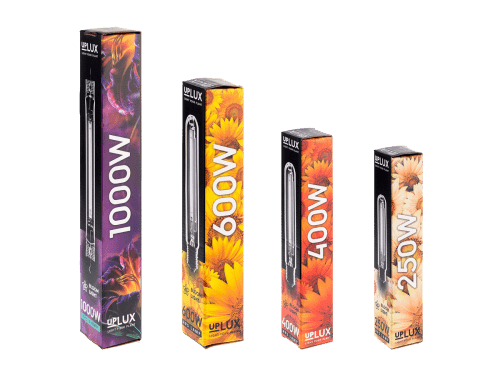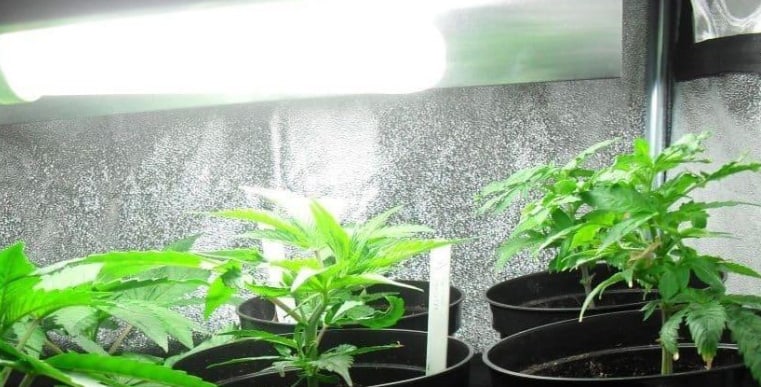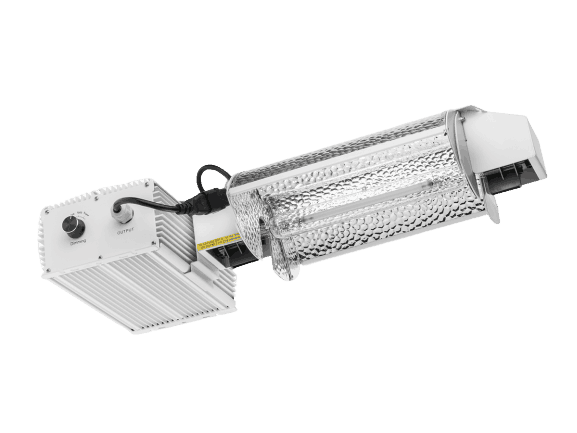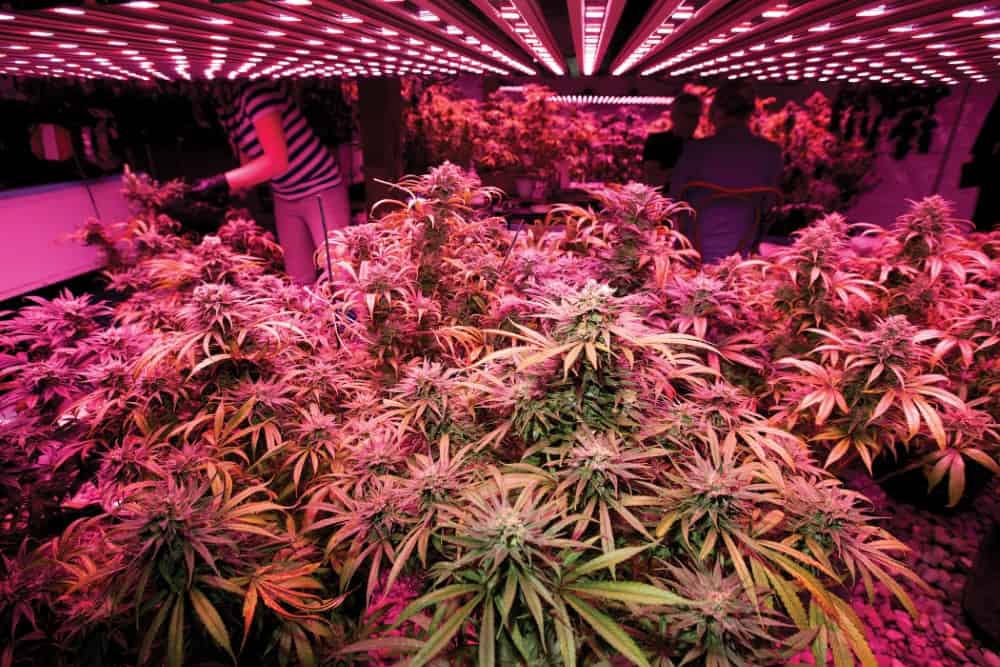Lighting for cannabis growing – a guide for indoor growing

Cannabis plants like light, and lots of it. Light is the energy source for our plants and the base for the set up. In addition, the light determines when the plant starts its flowering stage. Most of the cannabis strains flower just before the winter, when the days shorten. Using professional growing lighting, we can grow cannabis anywhere and without depending on sunlight. Indoor growing using growing light bulbs allows control of light hours – we start growing providing 18 hours of daylight per day, and when we want to start the plant’s flowering stage we shorten the daylight hours to just 12 hours per day, making the plant think the winter has arrived and it needs to begin the flowering stage. Control of daylight hours allows enjoying short growing cycles – finishing growing cycles every two months and even less.
Growers use 4 types of lighting for cannabis growing:
- MH metal halide – provides white light and is suitable to the growing stage.
- Dual light bulbs (full spectrum) – dual light bulbs are HPS bulbs which include white light that makes them usable to growing and flowering. For most growers, these are the most suitable bulbs.
- Compact fluorescent (CFL) – a relatively weak bulb that is suitable for sprouting\cuttings or for very small set ups.
- LED – a fairly new technology in the growing world. A good solution for little set ups (up to 60 square cm on 1.5m height) in which the heat is hard to deal with.
Most growers use dual spectrum light bulbs. They can be found in professional growing shops and provide the plant enough lighting for the growing stage and the perfect spectrum for the flowering stage, thus ensure massive and high-quality flowering. Dual light bulbs come in 250W to 600W. All large lighting companies manufacture ideal bulbs for plant growing. The most popular company is UPLUX, which specializes In cannabis growing lighting.

UPLUX cannabis growing bulbs
Dual and metal halide bulbs require a lighting system that includes:
- Ballast (choke) – a component that stabilizes the current the bulb receives
- Spark plug – creates the high voltage that lights the bulb
- Reflector – the bulb house of the growing bulb
Compact fluorescent bulbs produce light suitable for the sprouting and rooting stage of the plant. It’s very convenient to use fluorescent bulbs for the very first stage of sprouting or cutting (a simple process for sprouting a plant without the need for seeds). The young plant does not need a lot of light, and compact fluorescent allows easy sprouting or cutting without using strong bulbs.

Cannabis growing lighting
Cuttings under CFL bulb
Metal halide bulbs are suitable for the growing stage. Normally, we will use metal bulbs if we have different spaces for the growing and flowering stages (this will be expanded later on). The metal bulb, like the sodium bulb, needs a lighting system to work.
LED light bulbs are a fairly new technology for plant growing; they should be power-saving and produce less heat. From our experience, LED technology is not evolved enough. High-quality LED bulbs are expensive and are suitable for very small set ups in which heat is hard to deal with.
LED bulbs
The lighting system is the heart of the set-up and requires a lot of investment (that is, of course, paid off). You should start with fluorescent lighting for sprouting and dual bulbs for the rest of the growth. The enjoyment of quality cannabis flower is two months away from you.
As mentioned, cannabis is a photoperiodic plant, which means it goes into bloom when it gets 12 hours or less light a day. We will take advantage of this feature of the cannabis plant to enjoy very fast growing cycles. In a home growing system you can finish a growing cycle of certain strains in 45 days. The lights are switched on and off using a timer (Shabbat clock). Some growers have are towers that hold 2 growing spaces, one for growth and the other for flowering. After harvesting the flowers from the inflorescence tent, they immediately insert plants from the growing tent and thus shorten the time of each growth cycle.
Dual and metal bulbs generate heat. During hot periods, to prevent our growing space from overheating, we will use closed reflectors connected to the ventilation so that the heat is removed from the growing space and the plants will receive light without heat, which will lower the temperature in the growing space significantly. Whether using an open or closed reflector, it is important to remember that the reflector is an electrical component that copes with a lot of heat and make sure the reflector is of high-quality brand and has a silicon power cord, not a plastic one.

Cannabis growing lighting

Cannabis growing lighting
1000W reflector by UPLUX
Another factor to consider when talking about growing lighting is the Mylar-reflective coating. The mylar is attached to the walls of the growing space and it returns the rays of light from its walls to the plant, allowing better utilization of our lighting system. Contrary to popular opinion, foil (aluminum foil) does not reflect light, it absorbs light. This is why no foil is used to coat growing spaces.
Growing stores offer professional tents in a variety of sizes. The walls of the tents are made of reflective materials and have a place for hanging the lighting. They also come with ready-made vents so that the set-up in general and the lighting system in particular is very light.

